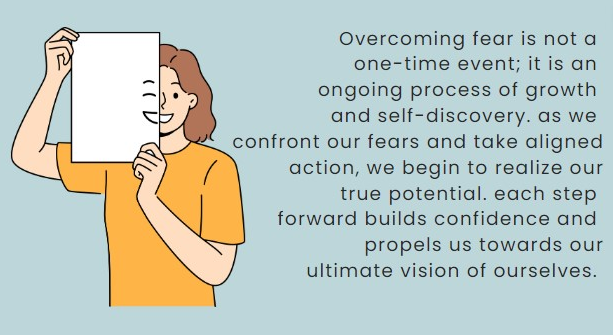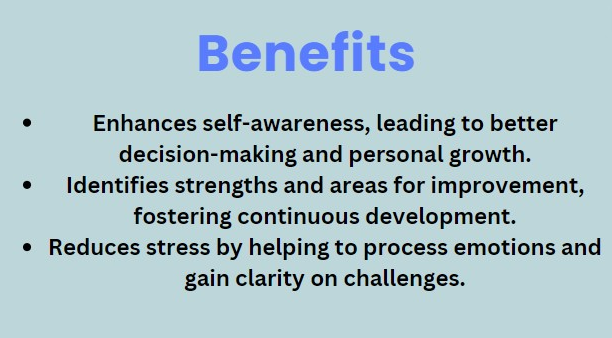Introduction:
Fear can be a powerful obstacle on the path to personal growth. However, with the right tools and mindset, you can overcome your fears and embark on a transformative journey of self-improvement. This comprehensive guide will explore 15 key strategies to help you conquer fear and kickstart your personal growth journey.
- Cultivating Self-awareness
Self-awareness is the foundation of personal growth. it involves understanding your thoughts, emotions, and behaviors.
How to develop self-awareness:
- Keep a daily journal
- Practice mindfulness meditation
- Seek feedback from trusted friends or mentors
- Take personality assessments
- Stepping Out of Your Comfort Zone
Growth happens when you challenge yourself beyond your usual boundaries.
Comfort Zone Expansion Exercise:
- Identify an activity that makes you slightly uncomfortable
- Set a small, achievable goal related to that activity
- Take action and complete the goal
- Reflect on the experience and your feelings
- Gradually increase the challenge level over time
- Embracing Mindfulness
Mindfulness helps you stay present and reduces anxiety about the future.
Simple Mindfulness Techniques:
- Deep breathing exercises
- Body scan meditation
- Mindful eating
- Walking meditation
- Setting Clear Goals
Effective goal-setting provides direction and motivation for your personal growth journey.

SMART Goal-Setting Framework:
| Criterion | Description | Example |
| Specific | Clearly defined | “I will read one personal development book per month” |
| Measurable | Quantifiable | “I will meditate for 10 minutes daily” |
| Achievable | Realistic and attainable | “I will attend one networking event per quarter” |
| Relevant | Aligned with your values and long-term objectives | “I will take an online course to improve my public speaking skills” |
| Time-bound | Has a deadline or timeframe | “I will practice gratitude journaling for 30 days” |
- Using Positive Affirmations
Positive affirmations can help reshape your self-talk and boost confidence.
Examples of Positive Affirmations:
- “I am capable of overcoming any challenge”
- “I embrace change and grow stronger every day”
- “I trust in my ability to learn and improve”
- “I am worthy of success and happiness”
5. cognitive restructuring
This technique involves identifying and challenging negative thought patterns.
Steps for Cognitive Restructuring:
- Identify negative thoughts
- Evaluate the evidence for and against these thoughts
- Generate alternative, more balanced perspectives
- Practice replacing negative thoughts with balanced ones
- Exposure Therapy
Gradually exposing yourself to feared situations can help reduce anxiety over time.
Exposure Therapy Process:
- Create a fear hierarchy (list fears from least to most anxiety-provoking)
- Start with the least fearful item on your list
- Gradually expose yourself to the feared situation
- Stay in the situation until anxiety decreases
- Repeat the process, moving up the hierarchy
See also>> Balancing Work and Life: Tips for Success
6. Developing a Growth Mindset
A growth mindset believes that abilities and intelligence can be developed through effort and learning.
Fixed vs. Growth Mindset:
| Fixed Mindset | Growth Mindset |
| “I’m not good at this” | “I can learn to do this” |
| “This is too hard” | “This is challenging, but I’ll improve with practice” |
| “I give up” | “I’ll try a different approach” |
| “Feedback is criticism” | “Feedback helps me grow” |
7. Practicing Self-reflection
Regular self-reflection allows you to assess your progress and make necessary adjustments.
Self-reflection Questions:
- What have I learned about myself today?
- How did I handle challenges this week?
- What are my biggest accomplishments and areas for improvement?
- How do my actions align with my values and goals?

8. building resilience
Resilience helps you bounce back from setbacks and persist in the face of obstacles.
Strategies to Build Resilience:
- Develop a strong support network
- Practice self-care and stress management
- Focus on what you can control
- Learn from failures and setbacks
- Cultivate a positive outlook
9. fueling motivation
Maintaining motivation is crucial for long-term personal growth.
Motivation Boosters:
- Set meaningful goals
- Break large goals into smaller, manageable tasks
- Celebrate small victories
- Visualize success
- Find an accountability partner or mentor
10.Forming Positive Habits
Consistent habits are the building blocks of personal growth.
Habit Formation Process:
- Choose a small, specific habit to develop
- Identify a trigger or cue for the habit
- Practice the habit consistently for at least 21 days
- Track your progress and adjust as needed
- Gradually increase the complexity or duration of the habit
- Developing Emotional Intelligence
Emotional intelligence involves recognizing, understanding, and managing emotions in yourself and others.
Components of Emotional Intelligence:
- Self-awareness
- Self-regulation
- Motivation
- Empathy
- Social skills
See also>> Why It’s Okay to Fail: Learning from Mistakes
11.Practicing Self-compassion
Self-compassion involves treating yourself with kindness and understanding, especially during difficult times.
Self-compassion Exercise:
- Identify a personal struggle or failure
- Write a letter to yourself from the perspective of a compassionate friend
- Offer words of understanding, comfort, and encouragement
- Read the letter aloud to yourself
- Utilizing Visualization Techniques
Visualization can help you mentally rehearse success and boost confidence.
Visualization Steps:
- Find a quiet, comfortable space
- Close your eyes and take deep breaths
- Imagine yourself successfully achieving your goal
- Engage all your senses in the visualization
- Practice regularly, especially before challenging situations
See also>>
Self Heal By Design: Unlocking Your Body’s Natural Healing Power
FAQs:
How long does it take to see results in personal growth?
Personal growth is an ongoing process, but you may start noticing small changes within a few weeks of consistent effort. Significant transformations often take months or even years.
Can I work on multiple areas of personal growth simultaneously?
While it’s possible to work on multiple areas, it’s often more effective to focus on one or two key areas at a time to avoid overwhelm and maintain consistency.
What if I experience setbacks in my personal growth journey?
Setbacks are a normal part of the growth process. Use them as learning opportunities, practice self-compassion, and recommit to your goals.
How can I stay motivated when progress feels slow?
Track your progress, celebrate small wins, and remind yourself of your “why” – the reasons behind your personal growth journey.
Is it necessary to work with a coach or therapist for personal growth?
While professional guidance can be helpful, it’s not always necessary. Many people achieve significant personal growth through self-study, practice, and peer support.
Conclusion:
Overcoming fear and embarking on a personal growth journey requires dedication, patience, and the right tools. By incorporating these 15 strategies into your life, you’ll be well-equipped to face your fears, expand your comfort zone, and achieve remarkable personal transformation. Remember that growth is a lifelong process – embrace the journey and celebrate your progress along the way.
